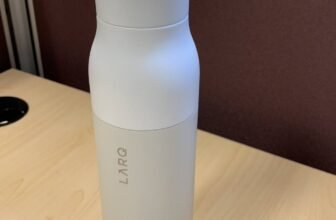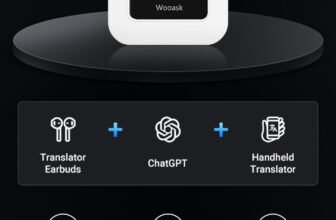The Best Alternatives to Bose Sleepbuds

Sleep Buds: The Silent Revolution for Better Sleep
Introduction: The Quest for Quiet
Imagine this: it’s midnight. You’re lying in bed after a long day, yearning for rest. But then, the symphony of urban life begins, cars whooshing down the road, neighbors arguing, your partner snoring like a chainsaw. No matter how tired you are, silence remains elusive. For millions worldwide, this is a nightly struggle.
In a noisy world, quality sleep has become a luxury. Enter Sleep Buds, tiny, powerful earbuds designed not just to play music or podcasts but to mask disruptive sounds and lull you into restful sleep. These devices represent a fascinating intersection between technology and human well-being, and they’re changing the way we approach nighttime routines.
Let’s dive into the world of noise-masking earbuds, explore their benefits and risks, and uncover the story behind the rise, and surprising fall, of the iconic Bose Sleepbuds.
The Science Behind Sleep and Sound
Before we get into earbuds, we must understand why noise affects sleep in the first place. Sleep is a delicate process involving various stages, light sleep, deep sleep, and REM (rapid eye movement). Even minor disturbances during these stages can lead to fragmented sleep, which reduces sleep quality and leaves you feeling groggy and fatigued.
Common sources of noise pollution include:
-
Snoring partners
-
Traffic or construction sounds
-
Barking dogs
-
Loud neighbors
-
Internal home sounds (appliances, plumbing, HVAC)
While some noises can be tuned out over time, others are just too disruptive. This is where noise-canceling or noise-masking earbuds can play a crucial role.
Noise-Canceling vs. Noise-Masking: What’s the Difference?
People often use the terms noise-canceling and noise-masking interchangeably, but they’re not the same, and this distinction matters when it comes to sleep.
Noise-Canceling Earbuds
These use active noise cancellation (ANC), which means they detect external sounds through built-in microphones and emit inverse sound waves to cancel them out. ANC is excellent for constant, low-frequency sounds like airplane engines or air conditioners.
However, ANC has limitations. It doesn’t work as well with sharp, sudden noises (e.g., a dog barking or a door slamming), and for some, the active cancellation can create a strange sensation or slight pressure in the ears, unpleasant when you’re trying to sleep.
Noise-Masking Earbuds
Noise-masking earbuds take a different approach. Instead of canceling noise, they mask it using soothing sounds, like white noise, pink noise, ocean waves, or ambient nature tracks. These sounds cover up disruptive noise, making them less noticeable.
Sleep Buds typically use passive noise isolation (via snug-fitting ear tips) combined with masking audio to help your brain tune out disruptions without the potential discomfort of active noise cancellation.
Bose Sleepbuds: A Dream That Faded Too Soon
When Bose launched its Sleepbuds, they made waves in the sleep tech world. Designed explicitly for sleep, not music or calls, the Sleepbuds were lightweight, wireless, and focused on comfort. They played a curated library of soothing sounds from an app, blocking noise and helping users fall asleep faster and stay asleep longer.
Why Were Bose Sleepbuds Discontinued?
Despite glowing reviews and cult-like popularity, Bose discontinued the Sleepbuds in 2019. The reason? Battery issues.
Bose explained that while users loved the product’s concept and design, they faced unpredictable battery failures due to the proprietary silver-zinc batteries. These issues led to poor user experiences, returns, and ultimately, the decision to pull the product from the market, despite its demand.
A newer version, Sleepbuds II, attempted to address some of these issues but was ultimately discontinued as well in 2023. Bose, a company known for audio innovation, decided to exit the sleep tech space entirely.
This departure left a vacuum, and many tired customers searching for the next best alternative.
The Best Alternatives to Bose Sleepbuds
Though Bose left the market, others have stepped in to fill the gap. Here are some top-rated Sleepbuds alternatives currently available:
1. QuietOn 3.1 Sleep Earbuds
-
Technology: Active noise canceling (optimized for low-frequency noises)
-
Strengths: No Bluetooth, small size, long battery life, extremely quiet
-
Best For: Snoring partners, city dwellers
-
Downside: No sound library or masking audio
2. Anker Soundcore Sleep A10
-
Technology: Noise masking + passive noise isolation
-
Strengths: Ultra-comfortable fit, sleep tracking, Bluetooth support
-
Best For: Those who want both masking and Bluetooth
-
Downside: Sound quality for music is basic
3. Kokoon Nightbuds
-
Technology: Adaptive audio with sleep tracking
-
Strengths: Slim profile, good app, sensors monitor sleep
-
Best For: Tech-savvy users wanting deep insight into their sleep
-
Downside: Slightly bulky for side sleepers
4. Loops Quiet or Quiet Plus (Non-Electronic Alternative)
-
Technology: Passive noise isolation
-
Strengths: No charging required, hypoallergenic
-
Best For: Simplicity and cost-effectiveness
-
Downside: No sound masking or tracking
Is It Safe to Sleep with Earbuds Every Night?
A natural concern with nightly earbud use is safety and ear health. Here’s what experts and research suggest:
Potential Risks:
-
Earwax Buildup – Wearing earbuds for long periods can push wax deeper into the ear canal.
-
Infections – Warm, moist environments (like ear canals covered by earbuds) can promote bacterial growth.
-
Pressure Discomfort – Some people may feel discomfort or soreness from prolonged earbud wear.
-
Hearing Damage – Playing sounds too loudly, even white noise, can cause gradual hearing loss.
Safety Tips:
-
Choose earbuds designed specifically for sleep (not just regular Bluetooth earbuds).
-
Keep volume low, below 60 dB is recommended.
-
Clean the earbuds regularly to prevent bacterial buildup.
-
Use soft, flexible tips that don’t irritate the ear.
-
Give your ears a break periodically (e.g., every few nights).
Bottom line? Yes, you can sleep with earbuds every night, if you choose high-quality products designed for sleep and follow hygiene best practices.
What Is the Best Way to Cancel Noise While Sleeping?
There’s no one-size-fits-all solution to canceling noise while you sleep, but here are the most effective methods, from high-tech to no-tech:
1. Noise-Masking Sleepbuds
-
Designed for comfort and blocking disruptive sounds.
-
Best for people who prefer soothing audio.
2. Active Noise-Canceling Sleepbuds
-
Ideal for low-frequency noises like snoring or traffic.
-
Great for tech enthusiasts.
3. White Noise Machines
-
Place on your nightstand to create a consistent audio backdrop.
-
Good for people who don’t want anything in their ears.
4. Passive Earplugs
-
Affordable and effective.
-
Best for occasional use or travel.
5. Room Soundproofing
-
Add blackout curtains, acoustic panels, or door seals.
-
Perfect for permanent, high-impact results.
Combining multiple approaches often yields the best results. For instance, noise-masking earbuds + a white noise machine = layered protection.
Real-Life Story: How Sleepbuds Saved My Sanity
Let me share a personal experience that highlights how transformative these tiny devices can be.
A few years ago, I moved into a downtown apartment, great location, terrible acoustics. Every night, I was jolted awake by honking horns, bar crowds, and my upstairs neighbor’s inexplicable 3 a.m. vacuuming routine.
Desperate for sleep, I bought a pair of Bose Sleepbuds. The first night felt magical. I chose a “tranquil shore” soundscape and, for the first time in weeks, slept through the night. My anxiety decreased, my productivity soared, and I felt like myself again.
When Bose discontinued the product, I was heartbroken. But I eventually found solace in QuietOn 3.1 earbuds. They don’t play audio, but the silence they bring is golden.
Today, I can’t imagine sleeping without them.
The Future of Sleep Technology
The discontinuation of Bose Sleepbuds revealed something important: people deeply value quiet sleep. And while Bose may have stepped away, the demand has sparked a new wave of innovation in sleep tech.
Emerging trends include:
-
AI-driven sound masking that adapts to your environment in real-time
-
Sensors that track REM and adjust sound accordingly
-
Earbuds with biometric tracking for heart rate and breathing
-
Non-invasive bone conduction earbuds to avoid ear canal discomfort
The next generation of Sleepbuds will likely be smarter, smaller, and even more effective.
The Silent Sleep Revolution
We live in a world that rarely quiets down. Yet our minds and bodies need silence, or at least, peace, to recharge and heal. Sleepbuds and noise-masking earbuds offer a profound gift: control over our sleep environment.
Whether you’re dealing with snoring, noisy neighbors, or just a busy mind, there’s likely a solution that fits your needs, from high-tech ANC buds to humble foam earplugs.
While the Bose Sleepbuds story is one of innovation that came too early, it paved the way for a new generation of sleep solutions. So if you’re still tossing and turning, maybe it’s time to let technology tuck you in.
Sleep well, and sleep quiet. image/theyumlist.net





